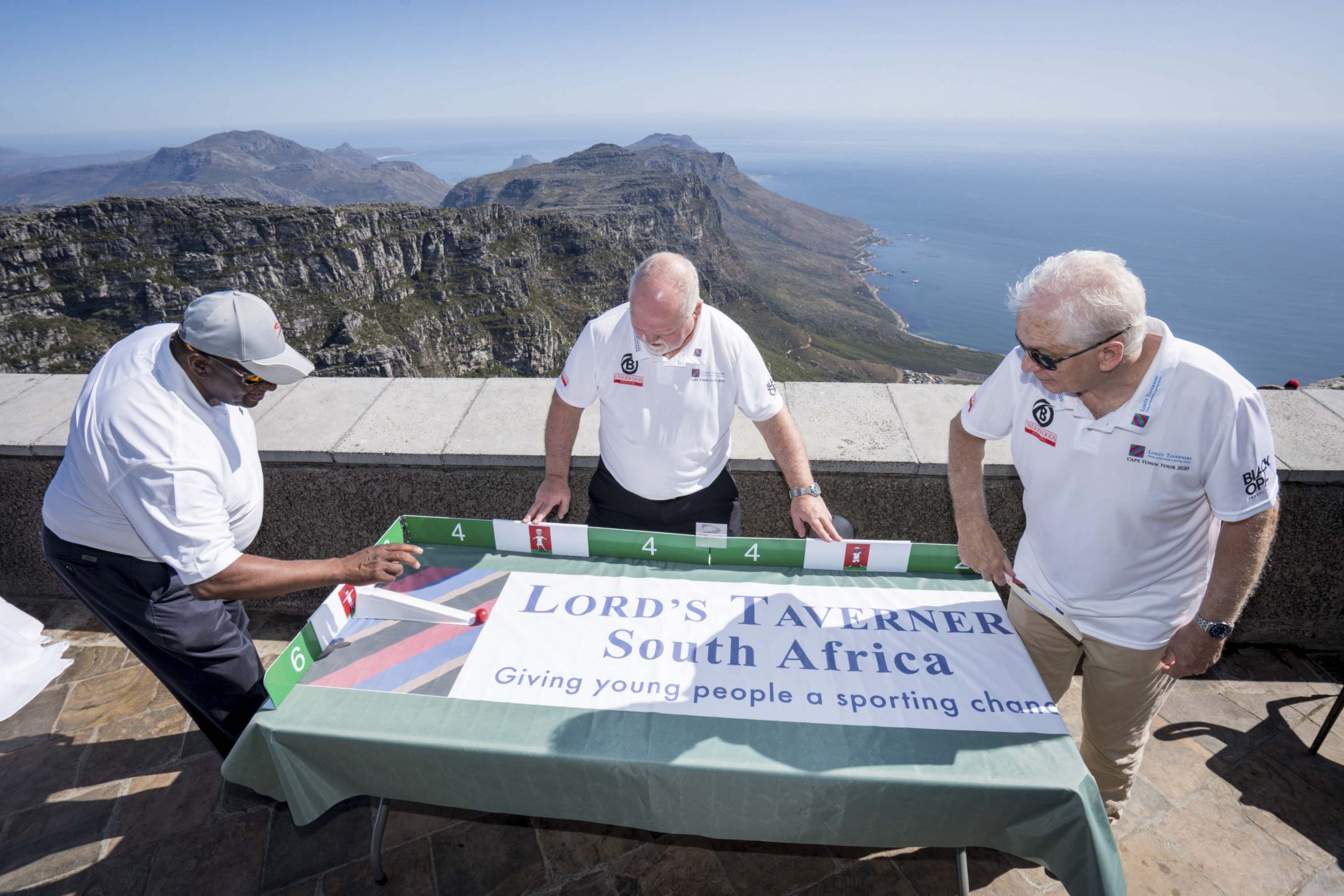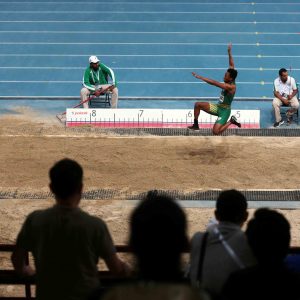Table cricket gives disabled kids a go at the game
An exciting variation of cricket for children with additional needs provides the thrill of competition and the camaraderie of playing in a team, but its introduction into schools has been slow.
Author:
18 November 2020

Given the constant evolution of cricket and the various formats that spring up as a result, there hardly seems room for another variation of the game.
Already, cricketing purists maintain that there is no truer form than the original version, the five-day slog between bat and red ball that provides the ultimate test for a player. And to hell with anything else.
On the flipside, Twenty20 evangelists say that without the invention of the shortest form of the game, cricket would have died a not-so-slow death many years ago. They insist that the “home run derby” format of bowlers on a hiding to nothing has ushered in a new breed of fan – and much-needed funds.
As for The Hundred and three-team cricket … well, you’re probably better off following baseball if you find these formats appealing.
Be that as it may, there is another abbreviated and adapted version of cricket that you can – and should – throw your support behind. Called table cricket, it’s been around since 1992.
The game is played on a table tennis table with two teams of six players each. There is a spring-loaded bowling machine at one end, from which the bowler bowls, and on the other is the batter using a miniature bat. Each individual innings lasts two overs. Runs are scored by hitting different sections of the panels set up around the edge of the table – much like advertising boards around a cricket field – which are marked to indicate two, four or six runs. The fielders are placed around the table and use sliding panel covers to “catch” the ball. Balls bowled wide are penalised with four runs for the opposition.

Doug Williamson developed this format of the game at Nottingham Trent University as part of Project Adapted, which was started to enable children with a range of learning disabilities and impairments to participate in sporting activities.
The Lord’s Taverners, a London-based sports charity organisation that celebrated its 70th anniversary this year, immediately adopted the programme. Its list of former presidents reads like a who’s who of the sports and entertainment worlds, including the Duke of Edinburgh, the Prince of Wales, former England cricket captains Colin Cowdrey and Mike Gatting, and famed talk-show host Michael Parkinson.
Another ex-England captain and star batsman, David Gower, who this year became the Taverners’ 40th president, joined Gatting in South Africa earlier this year to promote table cricket. Gower fondly recalls the impact the sport had on the children, as Cape Town-based primary schools Eros and Vista Nova battled it out in an exhibition match at the Western Province Cricket Club.
Related article:
“The thing about table cricket is there are people like us, able-bodied and able to play cricket on big fields. And if you have the right combination of luck and ability, you can make a life out of it, as I was very fortunate to do,” the 63-year-old said.
“But of course there are many people who are not nearly as fortunate; those who have spent most of their lives confined to wheelchairs through whatever disability. What table cricket has done is given those kids an opportunity to, at the very least, experience in some way the joys we have experienced through playing sport.
“And the best thing about it is that the concept is simple and not very demanding, but it is very effective. And when I see the look on the children’s faces, it really is something to behold.”
Getting schools to adopt the sport
The point of the Lord’s Taverners visiting Cape Town earlier this year was to raise awareness for table cricket, and to try and get the game into more additional needs schools around the country. But South Africa being South Africa, it isn’t quite as simple as that.
In England, the different counties play an active role in promoting and running the programme, with regional and national competitions for the 8 000 participants, and the final held at the famed Lord’s ground itself. But in South Africa, it has proven a struggle to even get buy-in from the powers that be.
“The major challenge in getting the game accepted by schools is that the government-defined curriculum only allows for a very short ‘recreation’ period every week of maybe one hour,” says David Ralph, chief executive of the South African chapter of the Lord’s Taverners.
“The game is played by two teams of six players who all bat, bowl and field, so that means a six-over match per side can take more than one hour to complete. This restricts the involvement of many children who would like to play, and there is no after-school sport as the children have to utilise the school transport to get them to their homes.”
Time is but one of the challenges faced in getting the game into more schools and communities.
Additional-needs transport has to be arranged for players and coaches for every inter-school match, the logistics of which can take time and effort. Then there is the question of availability of teachers to maintain the programme after it is introduced to school. And, of course, funding. One table cricket setup costs R10 000, and convincing people to part with their money for a game they know so little about is easier said than done.
Related article:
The net result is that table cricket is being played in only 20 schools around South Africa, despite the first game being rolled out at Forest Town School in Johannesburg more than four years ago. Organisations such as Lord’s Taverners South Africa and Sporting Chance, which manages the coaching clinics and games throughout the Western Cape, can only do so much. The Department of Basic Education and, by default, the government, needs to see the value in introducing more recreational activities like table cricket into these schools.
Success story
If the government should need confirmation about just how big an impact a programme such as table cricket can have, they need look no further than Josh Herbert, a 13-year-old student at Eros Primary School in Athlone, Cape Town.
In 2016, he was diagnosed with limb-girdle muscular dystrophy, which results in progressive muscle deterioration, predominantly in the hips and shoulders. Doctors told Josh’s parents that it would only affect him later in life, but by the following year he was using a wheelchair and struggling to perform many basic tasks. Joining the table cricket setup at his school proved to be a life-changing decision.
“I had never heard of table cricket before he mentioned it,” admits Josh’s mother, Maxine. “But playing the game has really helped him a lot. At first he couldn’t even lift a cup. Before, he had to support his elbow and push up with his other hand just to take a sip, but now he can lift the cup on his own. He’s definitely much stronger in his arms now than before he started playing.”
Increased strength is but one of the positive effects of table cricket. “If you speak to teachers, carers and parents, many will talk about the social, personal and cognitive benefits it has on individuals,” says Lord’s Taverners head of cricket programmes Henry Hazlewood.
Related article:
“The game lends itself to cognitive engagement with it being fast-paced, tactical and numbers-based. It’s an excellent tool for engagement and often participants who otherwise struggle in the classroom, thrive at the table.
“It’s also great for social skills. Good players need to communicate, and with every competition comes new experiences and new people to meet. This is great for confidence, social skills and interaction. We also try and tailor table cricket to encourage the development of important skills like leadership through captaincy. Confidence and independence are also elements that come through strongly.”
Strength, social skills, confidence and cognitive benefits. It really seems a no-brainer. But as Gatting explains, perhaps the biggest positive table cricket brings is hope.
“It is quite an emotional thing,” he says. “You see these kids in wheelchairs who have never been included in any sports because they’re just not able to. But table cricket enables them to be part of a team, to understand the emotions of winning and losing, and gives them a feeling of self-esteem.
“It’s fascinating to see the pride and passion they all show, and of course to get out of their schools and meet new people. They get a feeling of, I suspect, hope … perhaps something that doesn’t always come so naturally to them.”




